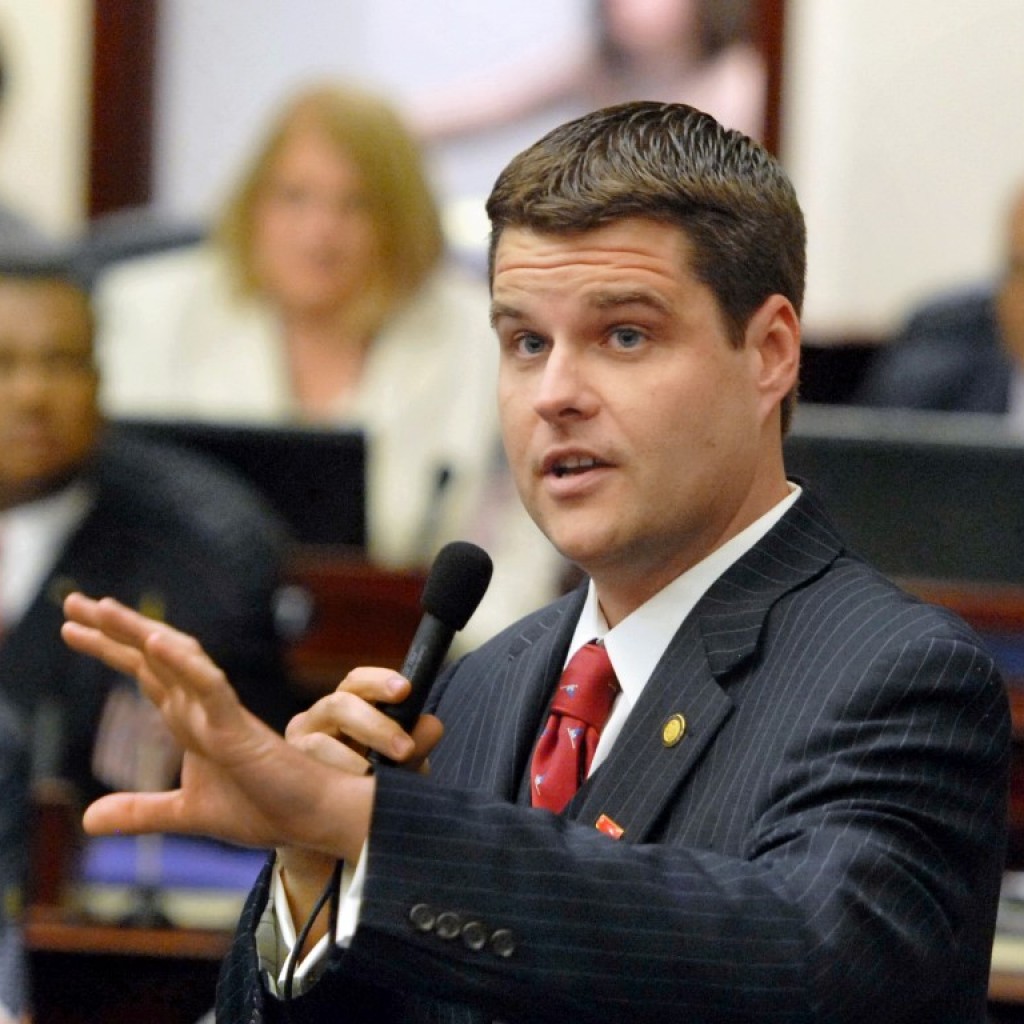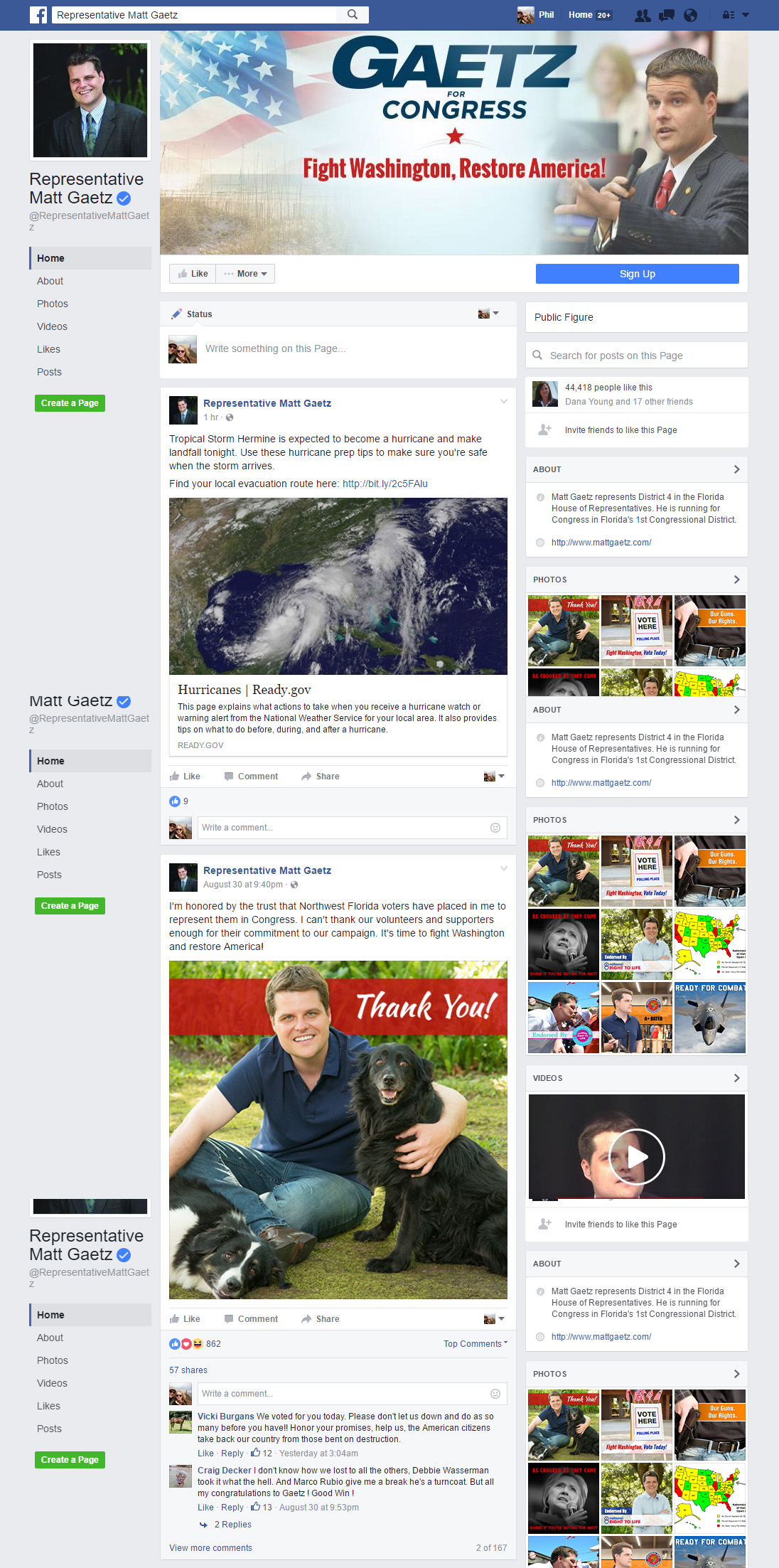
Matt Gaetz may have enjoyed an easy victory in Florida’s 1st Congressional District, beating State Sen. Greg Evers and others in the crowded Republican primary Tuesday night.
But in reality, the double-digit win — 37-21 percent over second-place Evers — was far from simple.
Much of Gaetz’s triumph came by way of an aggressive digital media effort, spearheaded by the Tallahassee-based Enwright Consulting Group.
The way to win modern elections has changed; as such, a memo obtained by FloridaPolitics.com shows Enwright embraced the concept of digital-first strategies, particularly at the legislative level. And that bet paid off.
Enwright’s digital team, led by Dan Barrow, proved to be key to Gaetz’s success to date. Gaetz now faces Democrat Steven Specht in November to represent a region that hasn’t sent a Democrat to Congress in over two decades.
Enwright made digital a top priority for Gaetz’s campaign, employing a two-pronged approach: Facebook and email. The campaign used email for identifying new supporters, fundraising and providing relevant voter content. Social media offered cutting-edge voter outreach, with Gaetz’s Facebook page leaning heavily on video, GIFs and other digital assets.
Leading the effort in developing the campaign’s extensive catalog of videos and GIFs was Erin Gaetz, who personally filmed, produced and edited all digital content, which ranged from 30-second spots to extended narrative pieces focusing on Matt Gaetz’s constituent work.
One highlight was a digital short telling the story of Matt Gaetz’s work to bring Northwest Florida’s first medical marijuana shipment to a special needs child in his district. It became the most shared video of the campaign.
The campaign also relied on the foundations of digital marketing — particularly A/B testing. Enwright developed just the right emails and subject lines that resonated best with voters, building a solid base of support for Gaetz before a single ballot was cast.
Data collected from emails and other digital sources was then used for more traditional campaign tools. Armed with the right message, perfectly crafted for Northwest Florida Republicans, volunteers began reaching out with door-to-door canvassing, phone banks, and get-out-the-vote efforts.
As for Facebook, Enwright says the stats speak for themselves: Gaetz’s Facebook page received 44,000 likes. Those fans also were politically active, and 28 percent more likely to return vote-by-mail ballots.
More than 1,700 Gaetz supporters were identified through Facebook, and 25 percent of them — as well as 26 percent of engaged users — were aged 65 or older, a key demographic in CD 1. The top-performing post had a reach of 47,457 unique users.
Enwright also points to the effectiveness of email as a fundraising tool; email was responsible for raising more than $20,000, with an average online contribution of $152. More than 400 individual supporters were identified through email campaigns, and addresses were categorized by issue, with custom messages sent to 5,000 voters, urging them to donate and vote.
Get-out-the-vote efforts were also subject to A/B testing, targeting three voting groups that would prove essential to victory: Domestic, Military and Election Day voters.
When the other campaigns and outside groups went negative in CD 1, Gaetz remained laser-focused on shoring up his core base, who not only remained faithful come the primary but also rose to his defense.
Few things speak louder than success; Gaetz won the six-way race by more than 14 points. And along the way, Gaetz amassed a loyal digital audience that will, no doubt, prove vital in the future.
Which proves one thing: it takes a lot of hard work to make something look so easy.




